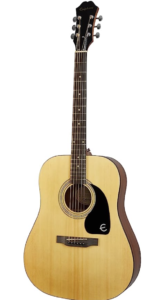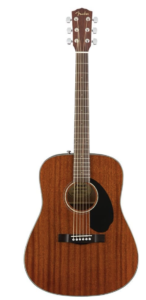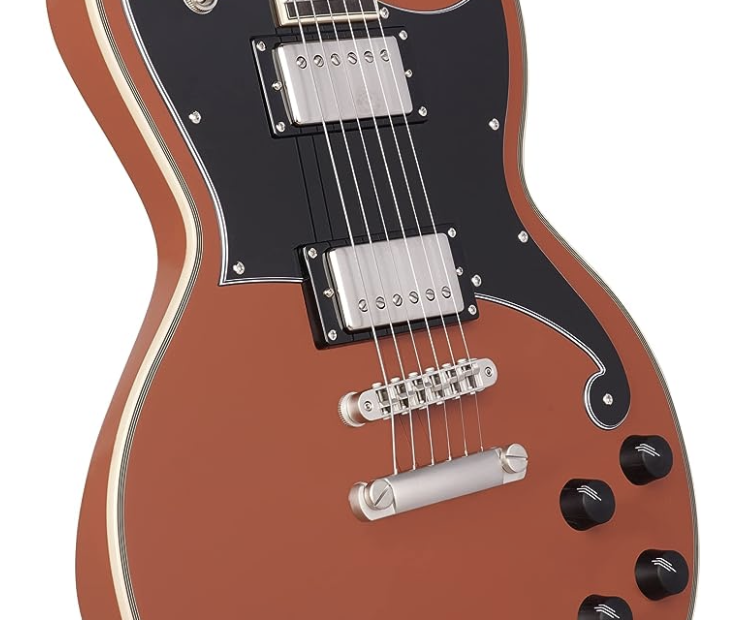 Here’s the list of the 30 most common guitar chords along with a short description, and the notes that make up each chord:
Here’s the list of the 30 most common guitar chords along with a short description, and the notes that make up each chord:
- C Major (C): A simple, foundational chord with a bright and uplifting sound. Notes: C E G
- A Minor 7 (Am7): The natural minor counterpart of C Major, conveying a mellow and emotive vibe. Notes: A C E
- G Major (G): A versatile chord with a resonant sound, commonly used in popular music. Notes: G B D
- E Minor (Em): Easy to play and widely used, evoking a subtle and melancholic feel. Notes: E G B
- D Major (D): A powerful and triumphant chord that adds energy to chord progressions. Notes: D F# A
- A Major (A): Popular in many songs, exuding a strong and confident tonality. Notes: A C# E
- E Major (E): An essential open chord with a bright and vibrant character. Notes: E G# B
- D Minor (Dm): Expressive and emotive, frequently utilized in ballads and soulful tunes. Notes: D F A
- F Major (F): A slightly challenging chord but valuable for adding depth and variety. Notes: F A C
- B Minor (Bm): Provides a moody and introspective atmosphere in compositions. Notes: B D F#
- Bb Major (Bb): Offers a unique and rich tonal quality, especially in jazz and blues. Notes: Bb D F
- F Major 7 (Fmaj7): A jazzy variation of F Major, adding sophistication to progressions. Notes: F A C E
- C Major 7 (Cmaj7): A smooth and elegant chord used in jazz and mellow songs. Notes: C E G B
- G Major 7 (Gmaj7): Conveys a dreamy and laid-back vibe, often in jazz and R&B. Notes: G B D F#
- D Major 7 (Dmaj7): A sophisticated chord with a touch of elegance and warmth. Notes: D F# A C#
- E Major 7 (Emaj7): Creates a lush and atmospheric sound, ideal for introspective music. Notes: E G# B D#
- A Major 7 (Amaj7): Adds a touch of sophistication and allure to chord sequences. Notes: A C# E G#
 E7: A popular dominant 7th chord, contributing tension and resolution to progressions. Notes: E G# B D
E7: A popular dominant 7th chord, contributing tension and resolution to progressions. Notes: E G# B D- A7: A classic blues chord with a bluesy and soulful quality. Notes: A C# E G
- D7: Commonly found in blues and rock, delivering a strong and expressive punch. Notes: D F# A C
- G7: A fundamental chord in blues, jazz, and swing music, providing a distinct feel. Notes: G B D F
- B7: A bluesy and intense chord used in various genres for its gripping sound. Notes: B D# F# A
- C7: Frequently used in blues, jazz, and soul, giving a vintage and soulful touch. Notes: C E G Bb
- F7: A soulful chord with a touch of bluesiness, found in many jazz standards. Notes: F A C Eb
- B Minor 7 (Bm7): A smooth and relaxed chord, perfect for laid-back grooves. Notes: B D F# A
- E Minor 7 (Em7): Creates a chill and jazzy vibe, great for modern and soulful tunes. Notes: E G B D
- A Minor 7 (Am7): An expressive and versatile chord used in jazz and ballads. Notes: A C E G
- D Minor 7 (Dm7): Evokes a contemplative and introspective atmosphere. Notes: D F A C
- G Minor 7 (Gm7): A soulful and bluesy chord, frequently used in jazz and funk. Notes: G Bb D F
- C Minor 7 (Cm7): A mellow and soulful chord, often used in jazz and R&B. Notes: C Eb G Bb
These 30 guitar chords are essential for any guitarist and can serve as building blocks for your musical journey. They offer a wide range of emotions and tones, allowing you to express yourself creatively and play various styles of music.
Also Read:
Mastering the C/E Guitar Chord
Top Tips to Play Guitar Chords
Practicing these Chords
 Practicing guitar chords is essential for any aspiring guitarist. Here are some effective ways to practice and master these chords:
Practicing guitar chords is essential for any aspiring guitarist. Here are some effective ways to practice and master these chords:
- Start with the Basic Chords: Begin by focusing on the essential chords like C Major, A Minor, G Major, E Minor, D Major, and A Major. Practice switching between these chords smoothly and accurately.
- Use a Metronome: Set a metronome to a slow tempo and practice changing chords in time with the clicks. Gradually increase the tempo as you become more comfortable.
- Chord Charts and Diagrams: Refer to chord charts and diagrams to learn the finger placements and strumming patterns for each chord. Practice visualizing the chord shapes in your mind to improve memorization.
- Practice Transitions: Work on transitioning between chords that are commonly used together in songs. For example, practice moving from G Major to C Major or from A Minor to E Major.
- Strumming Patterns: Experiment with various strumming patterns while playing the chords. This will help you develop a sense of rhythm and groove.
- Chord Progressions: Practice playing common chord progressions, such as I-IV-V or I-V-VI-IV, in different keys. This will improve your ability to play songs and recognize chord patterns.
- Chord Changes Drill: Focus on one chord change at a time. Play the first chord, lift your fingers slightly above the strings, and then land them precisely on the next chord shape. Repeat this process until the transition is smooth.
- Slow Down and Be Patient: Don’t rush through chord changes. Take your time to ensure that each finger is correctly positioned, and the sound is clear. Speed will come naturally with practice.
- Play Along with Songs: Practice playing chords along with your favorite songs. This will make the learning process enjoyable and help you apply chords in a musical context.
- Record Yourself: Use a recording device or smartphone to record your practice sessions. Listen back to identify areas that need improvement and track your progress over time.
- Warm-up Exercises: Start your practice session with finger warm-up exercises, such as finger stretches and chromatic exercises. This will help loosen up your fingers and improve dexterity.
- Practice Regularly: Consistency is key to improvement. Set aside dedicated practice time each day, even if it’s just for a few minutes.
Remember that learning guitar chords takes time and patience. Stay motivated, and celebrate your progress as you gradually become more confident in playing these chords.
